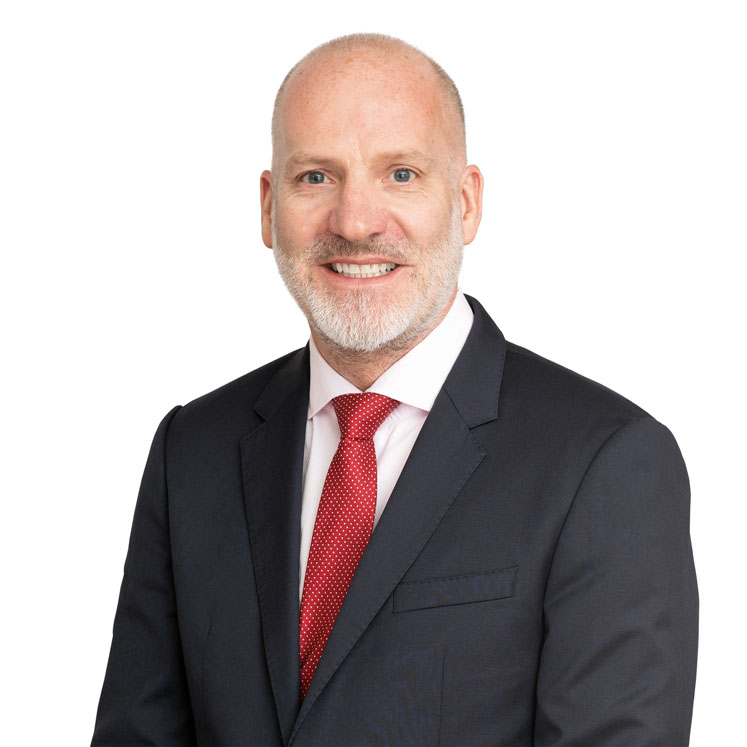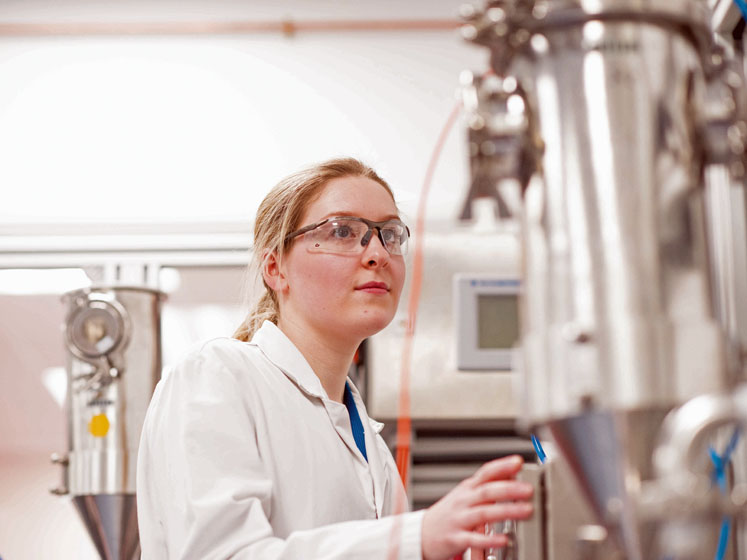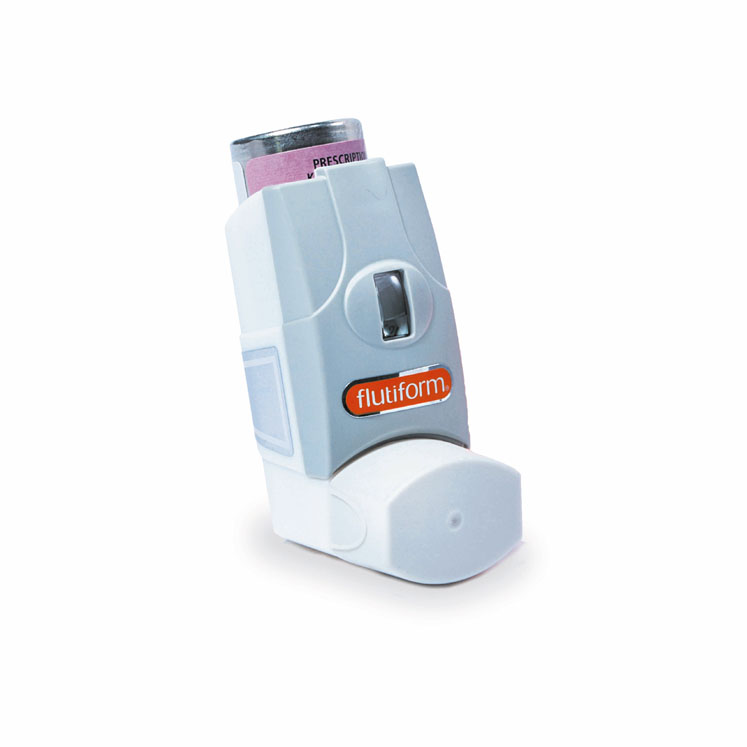It’s widely predicted that the increasing prevalence of various respiratory diseases, coupled with an ever-expanding geriatric population and rising air pollution levels, will drive growth in the inhalable drug and respiratory devices market.
Yet the number of inhaled drugs that are approved is very small. Speaking with Will Downie, the newly appointed CEO and Executive Director of Vectura, I wonder if there’s a disconnect in the industry in terms of developing new chemical entities (NCEs) for both respiratory and non-respiratory diseases, and what barriers need to be overcome to increase the number of approvals.
When appointed in November 2019, Will commented that he was looking forward to driving Vectura’s new business strategy and ensuring that the company achieves its long-term goal of becoming a world-class contract development and manufacturing organisation (CDMO) as a device and formulation specialist in the inhalation space. Building on that statement, he brings me up to speed with some of the dynamics in the market and what the company is trying to do.

Will Downie, CEO and Executive Director, Vectura
“It goes far beyond respiratory, actually,” he says,” and I think the inhaled route of drug delivery for patients is going to increase in due course.” But, he adds, there’s a very good reason why there aren’t hundreds of inhalation companies out there. “Primarily, it’s incredibly difficult to do! It’s also a relatively mature aspect of the industry, particularly within the UK, with companies like ourselves and bigger players such as GSK, AstraZeneca and Novartis (in Switzerland) dominating the sector. And, beyond being complex, barriers to entry are really high and the deep scientific knowledge that’s required within the inhaled drug delivery space is both complicated and difficult to achieve.”
“You also have to consider what you need to do from a drug development and device perspective,” he tells me: “Getting that combination right can be very challenging … and I think that’s where we see a sweet spot for Vectura. It’s not all hurdles, though, the market is growing — both in terms of new chemical entities and opportunities for CDMOs — and I see positive growth throughout the industry for at least the next 5 years (at a CAGR of approximately 7%).”
“There’s also a lot of activity in the inhalation subset,” notes Will, adding: “There are probably 300–350 molecules in development right now, 70% of which are in the early stages of preclinical to Phase II. As you might expect, a lot of that work is being done by smaller companies and virtual organisations — particularly on the west and east coasts of the US, the UK and in some of the major pharma development hotbeds across Europe — as opposed to Big Pharma.”
A new strategy
The treatment landscape for respiratory disorders has traditionally been dominated by small molecule therapies that aim to treat the disease symptoms, rather than the underlying cause. This means that treatment options can be diverse in terms of their targets and mechanisms of action. However, during the past decade, the treatment of respiratory disorders has developed significantly, with novel and targeted therapies entering the market.
“Opportunity definitely exists in this market and, keeping an eye on these activities, we as a company have changed and pivoted our strategy,” Will explains: “Previously, Vectura was a company that helped to develop and codevelop compounds and products for our partners … but, at the same time, we were also working on our own pipeline. As such, it was a hybrid business model that had been in place for many years.”
“That’s now changing,” says Will: “As I join the company as CEO, we’re going to retain our focus on our partner programmes and maintain our longstanding relationships with established clients; but, we’re also going to open the aperture and spend more time, energy and resources on growing the business within the broader CDMO market. We’ll be looking at a much more diversified customer base and hope to work on as many of those 300–350 molecules as we can, as well as identifying clients to reformulate or repurpose compounds.”
Vectura has a long track record of bringing commercial products to market and that, says Will, is key: “The advantage we have is that we do both drug and device development really well. If you look at the market today, there are 11 commercial products out there that we have developed with our partners to get to market, and that represents about $10 billion in sales … mainly from 2012 onwards.”
Now, as the company positions itself as a focused CDMO, Will believes the questions that everyone’s going to ask are as follows:
- What’s your track record?
- Have you done it before?
- What are your credentials?
- Can we trust you with our molecule?
To answer that last, and possibly most important one first: “Yes, you absolutely can,” says Will: “We’re in the very rare position of being able to do both drug and device development together. Not only is that offering going to be very important for us as we make this transition, it’s also going to be a huge benefit for the overall industry."

"And we’re not just looking at the respiratory sector; if you look at those 300 molecules, the applications range from oncology to CNS, endocrinology, cardiovascular and beyond. The increasing prevalence of non-respiratory diseases such as diabetes and Parkinson’s disease, for example, is a key factor that’s expected to fuel the market for inhalable drugs.”
He continues: “So, there’s a pretty broad market for us to go after and, to address your original question regarding the paucity of NCEs for respiratory applications, it’s because it’s so difficult to do and there’re aren't that many players in market that have focused their attention on the early stage development of solutions for those indications.”
“What we’re going to be able to do now, is work across both drug and device development areas with a wider range of customers and start to bring those molecules to market. And just as all pipelines are getting more complicated, and both bioavailability and solubility are becoming more important, we’re going to help our clients to overcome those issues and expedite the process of getting products to patients in the shortest possible timeframe,” he adds.
Making the transition
I ask Will how the company will balance its own pipeline work with contractual obligations and ensure that there are no conflicts of interest. “We’re going to make the situation quite simple and no longer invest in our own pipeline,” he says, adding: “We’re making a clear exit from that part of our historical strategy for a number of reasons: it’s expensive and ties up a considerable amount of our resources."
"The ongoing business model will be quite straightforward; we’ll continue with our partner programmes as they are today and, concurrently, drive our CDMO activities with new clients and molecules. As such, there won’t be any conflict; trying to do both was one of the challenges that Vectura faced previously, resulting in a strain on resources and bandwidth.”
I’m also keen to know if the expanded CDMO role will necessitate investment in new technologies, skillsets, etc., or whether the increasing use of novel surfactant carriers, nanocrystals and micro/nanoparticles to improve current inhalable therapies is something Vectura can already accommodate.
Will responds by saying: “We have an innovation technology roadmap in place, which spans both development and device applications, so I think you’ll see a lot more research in terms of digital and connected health, smart nebulisers that offer both efficiency and efficacy benefits for asthma sufferers, devices that improve delivery to the lungs and reduce treatment times, etc.”

“Looking at our dry powder inhaler range, for example, there’s a focus on simplifying the application to improve and enhance the patient experience. It’s really complicated technology but, just like a smartphone, you’re trying to makes things more intuitive to improve compliance and adherence — especially for paediatric and geriatric patients. And from a formulation perspective, it’s about making sure that we’re continually staying ahead of the game, thinking about challenges such as particle size engineering and addressing a broad range of disease states.”
Perhaps doing the industry a slight injustice, I suggest that the device component of new therapies is possibly given second-fiddle status compared with the NCE itself. “I think there’s a lot of truth in that,” says Will, “and the reality is that if you look at today’s market and how it bifurcates into companies that do drug development and those that focus on devices, we’re one of the very few companies that sit in the middle and do both.”
“So, when we’re thinking about product development from a formulation and early stage angle, we’re doing it completely in concert with the device … and you have to do that to optimise both the molecule and the technology to deliver it. By doing so, you significantly increase your chances of success. So yes, your observation is accurate, but I think we have a real opportunity to have a major impact for our clients and tackle both aspects at the same time.”
Of rules and regulations
Looking at the raft of upcoming and incoming medical device legislation, Will believes the company is well prepared to deal with all the necessary requirements. “It never gets any easier,” he muses, “but with the right product, the right approach to quality and established patient demand, we have a very strong regulatory group at Vectura that can help both us and our clients — especially those smaller biotech firms that don’t have the necessary in-house infrastructure — to take their novel idea to the next level and provide the advice and guidance they need. It’s already an advantage, but I think it’ll become an even bigger one in the near future.”
In conclusion
The future’s looking quite positive, I suggest, and Will agrees: “We’ve got a nice position in the market, we’re changing our strategy so we can go after a much broader segment of that market, which is already growing; it’s not just good for us, it’s positive for our clients and, most importantly, presents an optimistic outlook for patients and end users.”
Will reiterates that many people still think of inhalables purely for respiratory applications, “but it’s much more than that and I think the demand drivers will play in our favour regarding how you get product — NCEs and reformulated dosage forms, for example — into the body without the systemic side-effects associated with less effective delivery formats. We’ve got a lot to look forward to and I’m thrilled to be able to apply what I have learned about drug development and delivery to my new position with Vectura.”
Summing up, he adds: “The scientific knowhow and depth of expertise here at Vectura is fantastic. Out of a staff count of approximately 450 employees, almost 200 of them are scientists, which is quite remarkable. And, there’s a tremendous amount of pride about working in the inhalation space. There’s a lot to be done, a lot to look forward to and massive potential to expand and build this company’s reputation in the long-term.”




